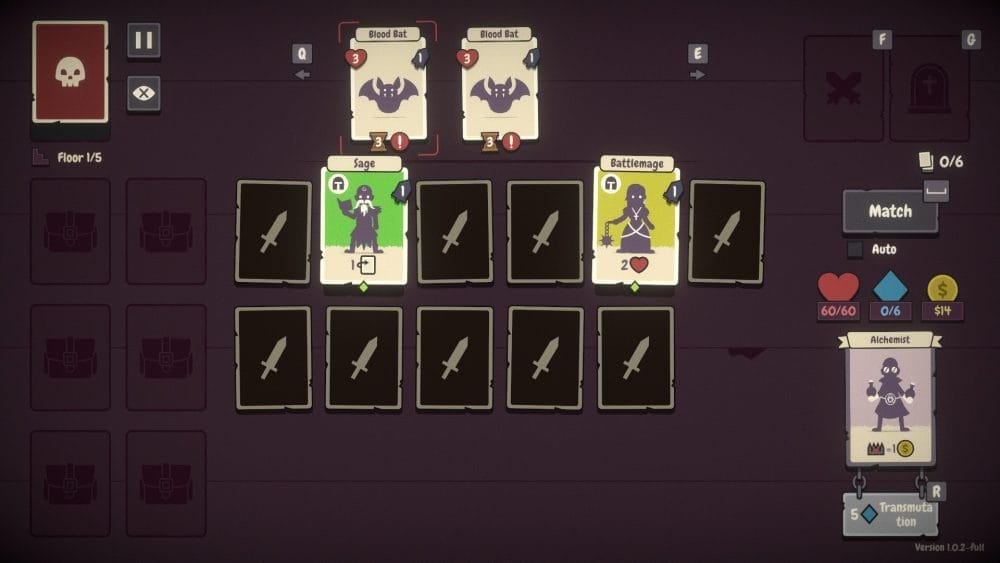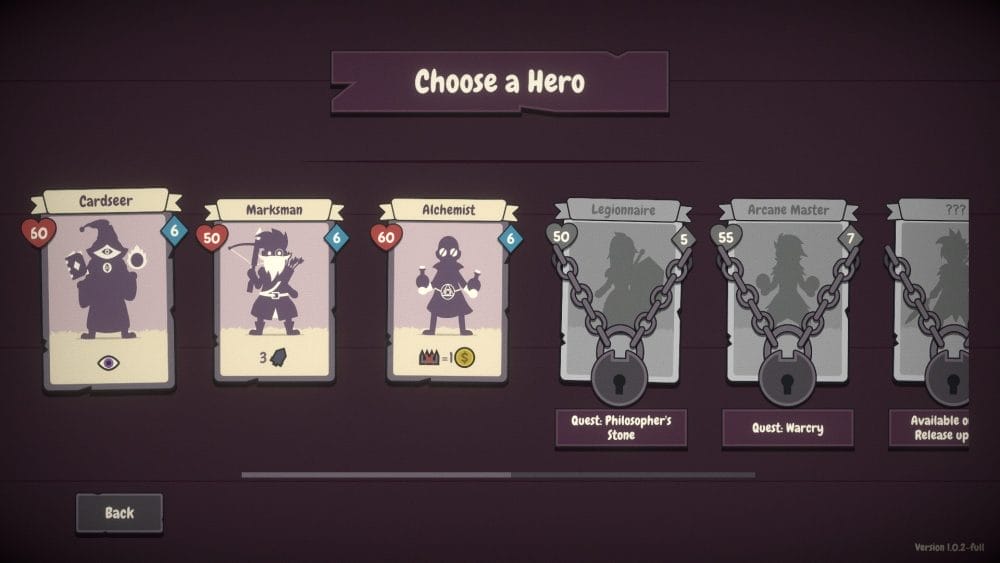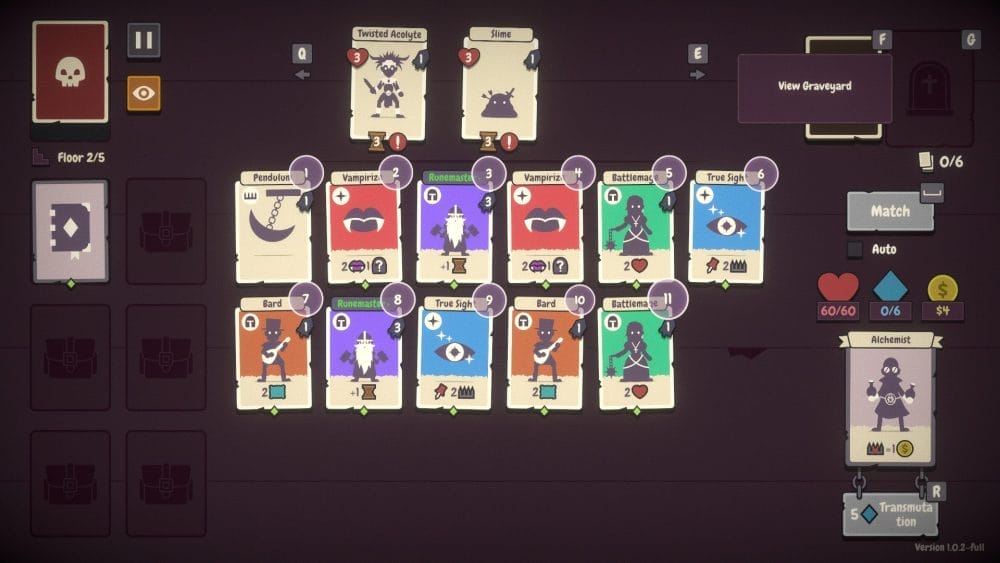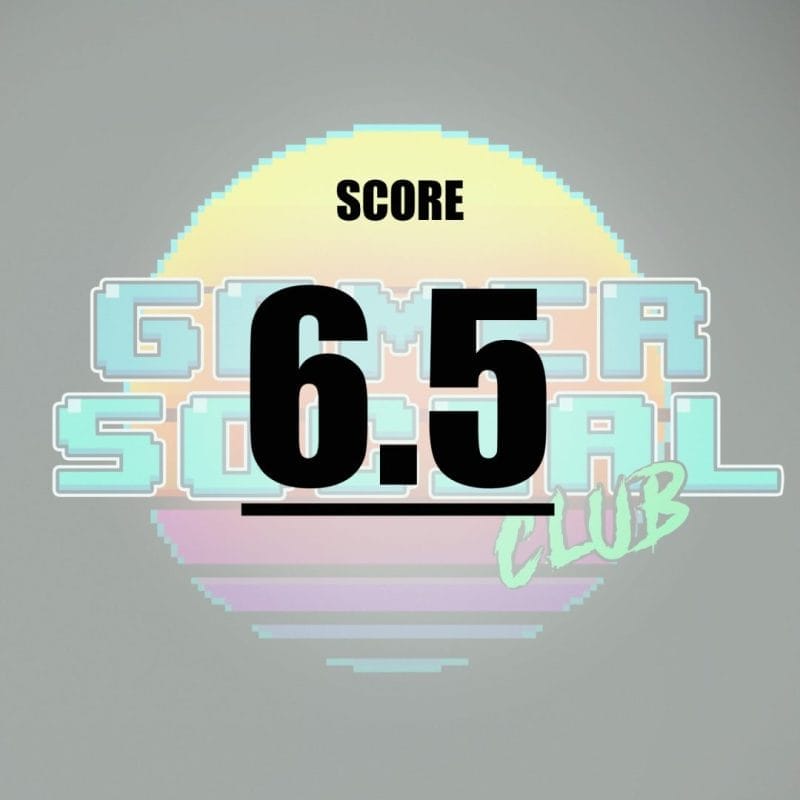Introduction
Video games and card games have a longstanding relationship, dating as far back as 1988 with the addition of Solitaire on Windows PCs. Whether playing alone or with others, card games have a versatility and accessibility that have made them some of the most popular games in the world. I believe it is these traits that has led to the current popularity of card-based mechanics in video games. As someone who doesn’t tend to play card games in general, digital or physical, I was surprised to find that there are barely any games that were inspired by the universal classic card game Match (or Concentration, Pairs, Memory, and a suite of other names). Pairs & Perils is one of these titles, a deck-builder roguelike dungeon crawler where you must match cards to perform actions. While the gameplay is well realised and easy to pick up and play, the game feels sparse in other aspects, making it a few cards short of a full house.

Premise/Narrative
I really like the premise for Pairs & Perils; the idea of using a childhood favourite with easy to understand rules is a great way to entice people to try the game. A test of memory as much a test of strategic thinking, there is a nice amount of challenge without being unapproachable.
Developed by Little Horror Studios and published by Rogue Duck Interactive, Pairs & Perils describes itself as a dungeon crawler. I find it hard to agree with this description. There is no narrative to speak of in the game. No plot or driving impetus, no characters or antagonists to build relationships with, or worldbuilding. While a game does not need these things to be good (and many don’t require them), given the nature of the game’s premise it did leave me somewhat disappointed. Playing through card based encounters against monsters, resting at campsites, finding loot, and shopping at stores are all there, but the game does very little to make that feel like it is happening. Ultimately, it felt like I was staring down at my cards on a stone dais while the dungeon crawling was happening offscreen.
Gameplay
Let me take you through a run in Pairs & Perils. You start by picking your Hero card which determines your health and special ability for the run. Only one Hero card is available at the beginning, and subsequent ones are unlocked by completing a run using the previous Hero card. Your special ability can be used once you have generated enough magic, which is earned through using attack cards and some item cards you collect. After picking the difficulty of your run (only easy and normal are available at the start), you pick the starting five cards in your deck.

Each run is made up of five levels, with each level consisting of rooms along a path that branches in the middle. Each type of encounter has an icon that lets you plan your route to the end of that level.
This is how a battle plays out, including the boss battle at the end of a run. Enemy cards are at the top of the screen, depicting their health, attack power, abilities, and turn counter (the number of turns before they attack). Your deck is then laid out face up at first, giving you a chance to memorise as many as you can, and then flip facedown. Picking two matching cards results in the results the card states, while a mismatch will result in no action being taken and the enemy turn counter ticking down by one. When a match is made those cards are sent to a discard pile, and after a certain number of matches are made your cards will be replenished so you don’t run out. All cards are pairs and you’ll never have only one of a pair to pick, except trap cards that are solo cards that will cause damage to you if picked. To see what each card does, including enemey cards, you just hover the mouse over a face up card and a side window will appear with all the information.
The enemy’s turn counter only goes down when a match isn’t made, so it is possible to get through a battle without them getting a turn. When it’s the enemy’s turn they do damage directly to your Hero card, and perform and actions they have. These range from making it so you can’t see a card you pick, to even making certain cards unpickable for a number of turns. Some pairs act as buffs for your Hero card or your other action cards, from giving you armour to adding life-drain to a pair of attack cards. Other skill cards can help in other ways, like highlighting which of your cards are traps. It would serve you well to read up on all your own cards, as well as the enemy cards at the start of each battle.

At the end of a successful battle, you earn some gold and progress onto the next encounter on the path, or pick from two if the path splits. Camps let you heal a certain amount of hit points or discard certain cards from your deck, while upgrade spots let you boost the stats of one card. Shops are where you can spend your gold, buying more cards for your deck or Item cards. You can carry up to six Item cards per run, and they act as permanent passive buffs for the run. These cards have a variety of effects, some acting constantly like a healing buff, and others activating at the start of a battle like destroying a trap card. If you don’t like the options at the shop you can refresh them for some gold, but the cost goes up every subsequent refresh. There are also loot chest rooms, where you can pick one of three cards to add to your deck.
A run can only finish one of two ways: victory or defeat. Make your way through all five levels and beat the boss, or lose all your health and fail the run. Regardless of how you finish, nothing is permanent, and the next run starts afresh. The only difference I could ascertain between a failed run and a successful run is you unlock the next Hero card if you used the previous one to win. This is the only form of progression in the game.
Visuals/Art Design
Pairs & Perils has a clean, minimalist art style, that lends itself to an easy to read and understand UI. The designs on each of the cards have a charming quality to them, and they look like a real deck when laid out. The use of bold silhouettes and single colours helps keep each card type recognisable and memorable. However, the game lacks any real visual effects, meaning that cards flip and move with little to no fanfare, and minimal feedback. We have seen plenty of card-based games that have been able to create drama and excitement using visual effects, but Pairs & Pixels feels a bit like playing bridge with your grand parents.

After only four or five runs I had seen nearly all the cards the game has, including all three of the bosses. With there being only one playing field, the game begins to feel somewhat repetitive, and I quickly worked out which cards were worth having for any run going forward. The developers have a roadmap stating that more content will be added to the game for free, which is reassuring.
Music/Sound Design
Sadly, the sound design and music do little to lift the feeling of repetitivness in the game. I only heard one song throughout my time with the game, and while sound effects are clean and appropriate, they don’t make up for the lack of visual feedback.
Conclusion
I enjoyed the time I spent with Pairs & Perils, but feel that it has some work to do before I would return to it. It needs some diversity in its visuals, a bit more flair in its presentation, a more for you to work towards. With such a short gameplay loop and nothing carrying forward, I don’t feel incentivised to play more. The option to unlock new card back designs, or a new play areas through winning would be a nice way to meet all these needs.
Pairs & Perils has a great idea at its heart, and the game’s technical design and systems are a solid foundation. Sadly, it’s the game’s lacking visuals, sound design, and progression that lead to this house of cards collapsing.

Pairs & Perils is available on PC.
We would like to thank the developers for providing a review key for the game.
The post Pairs & Perils Review appeared first on Gamer Social Club.